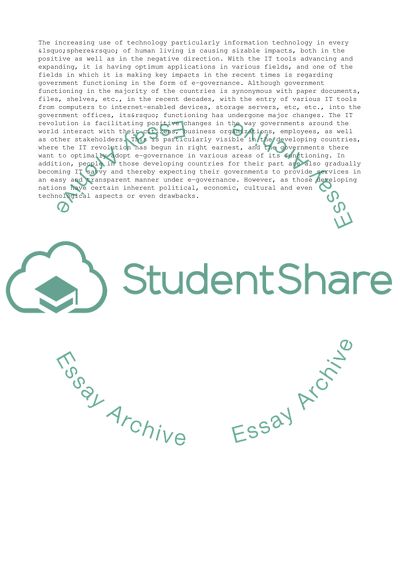Cite this document
(The IT Revolution in the Form of E-Governance and Its Positive Changes Research Paper, n.d.)
The IT Revolution in the Form of E-Governance and Its Positive Changes Research Paper. Retrieved from https://studentshare.org/management/1819558-a-critical-study-of-project-management-issues-in-e-government-in-developing-nations
The IT Revolution in the Form of E-Governance and Its Positive Changes Research Paper. Retrieved from https://studentshare.org/management/1819558-a-critical-study-of-project-management-issues-in-e-government-in-developing-nations
(The IT Revolution in the Form of E-Governance and Its Positive Changes Research Paper)
The IT Revolution in the Form of E-Governance and Its Positive Changes Research Paper. https://studentshare.org/management/1819558-a-critical-study-of-project-management-issues-in-e-government-in-developing-nations.
The IT Revolution in the Form of E-Governance and Its Positive Changes Research Paper. https://studentshare.org/management/1819558-a-critical-study-of-project-management-issues-in-e-government-in-developing-nations.
“The IT Revolution in the Form of E-Governance and Its Positive Changes Research Paper”, n.d. https://studentshare.org/management/1819558-a-critical-study-of-project-management-issues-in-e-government-in-developing-nations.


